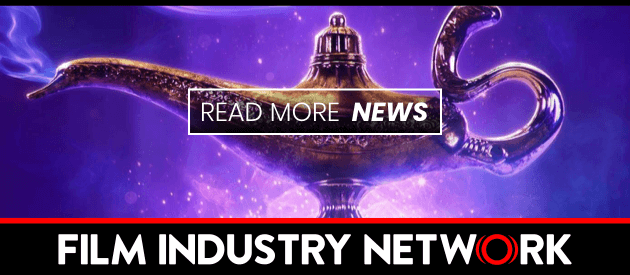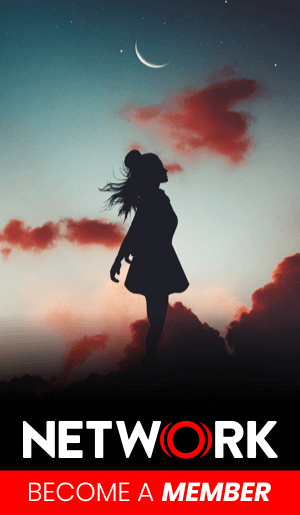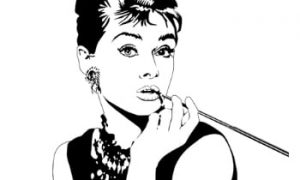Atropa Belladonna is a recent submission to the Student Film category. It explores the dark side of the fashion industry: obsession, seduction and destruction. Meet student director Lauren Mekhael..
By Katie Tillyer
Q: What is your film about? Can you give us a short synopsis?
ATROPA BELLADONNA is about the relationship between a photographer and a model and the film uses these subjects in order to exploit and investigate the politics of looking, the power dynamics activated by the camera lens and the transaction that is the image .
Q: The title, Atropa Belladonna is the botanical name for the plant Deadly Nightshade as well as the female character's name. What is the connection between Bella and the flower in the film?
The narrative of the film takes advantage of the lead female subject/object, Belladonna, a young model failing in her attempts at success. The flower Atropa Belladonna has a metaphorical meaning in the film, it symbolizes beauty. In the film, this particular flower represents danger and power struggles, it emphasizes how quickly beauty can fade, and how poisonous beauty can be. The flower also has many historical and cultural references associated with vanity and beauty. For example, in the 1800s women would use the poison of this flower in an effort to appear more beautiful, they would drop the poison in their eyes to dilate their pupils sometimes sacrificing their own sight for the sake of their appearance. For the character Belladonna to be named after this flower, the same flower that the photographer Rolf is at once nurturing and destroying, is demonstrative of her own fate.
Q: Where did the inspiration for the story come from?
Inspiration for this story came from a number of sources. In one way, it can be seen as a continuation from my last film; Portuguese Man O War, which was the story of a failing artist not strong enough to survive in the art industry. Atropa Belladonna tells the story of a failing model not strong enough to survive the fashion industry. I like to follow one character through the creative arts industries, supporting the underdog whilst showing a cruel side to a glamorous world.
Q: Tell us a little bit about the casting process how did you choose your actor and actress to play Rolf and Bella?
I had known of David Atrakchi from a previous film he was in, and I knew instantly he would be perfect for Rolf Aaron-Bravo. He had the look, the charm as well as being a talented up and coming actor. David also knew the fashion industry intimately, as he used to work as a model and had met people like his character (Rolf) many times before. I had to hunt David down and pressure him to give up a week of his busy time to shoot the film. We met in Cannes and I put more and more pressure on him. He was only able to confirm a week before the shoot, at which point I had secured several back-up actors but the film would not have been the same without David playing Rolf. Casting Bella was a bigger issue, I auditioned many girls, and I was looking at a mix of both models and actresses. It was her first film and I think she showed great potential. I think even her lack of on set experience aided the vulnerability needed for the character.
Q: What were some of the major difficulties that you encountered while shooting?
Our shoot was incredibly intense. We shot for seven days straight, pretty much day and night. The biggest problem we encountered while shooting was an insufficient schedule. In which case, I had perhaps 60 shots planned for one day, and due to conflicting timings of locations, actors and crew I was able to get about 12 of those shots done. So I think the film suffers from an evident lack of coverage. There were many problems we encountered while shooting but I think that s the world of low-budget filmmaking.
Q: In the film, the Rolf is fascinated by the transition between beauty and death. Can you tell us a bit more about how you explore this relationship in the film?
This was a very delicate element of the film, and I don t think the final cut does it justice. Rolf was intended to be a character infatuated with artistic conceptual photography, but his art unfortunately, was not nearly enough exposed in the film. Rolf is obsessed with a certain ideology of flowers, mainly, how at the same moment they reach their peak of beauty they then wither away and die. Rolf was using the flowers parallel to how he shoots models. There was a strong reference to the transitional nature of the modelling industry and how once the girls have reached their moment of youth and beauty they are then churned out and away by the industry. Rolf uses the idea of the transition between beauty and death to captivate Bella s interest, confusing her as to whether his intention is work or seduction. As Rolf explains to Bella more about his concept for the shoot, action starts to imitate the concept and Bella becomes the victim of Rolf's metaphorical allure.
Q: Was there anything you did in order to prepare your actors and actresses before the shoot?
We did many rehearsals before the shoot. I worked specifically with Angele a lot, allowing her to gain more confidence before the actual shoot. I remember we worked together many times on the nightmare scene, to explore how she would perform having the bad dream. Angele would lie down and close her eyes and I would read the scene description of the dream to her with eerie music on really loud and try and make her feel like she was in this haunted wasteland. We had a lot of fun and I think it worked well for preparation.
Q: Finally, do you have any other projects coming up?
I have a project in the very early stages of development right now. It s a short film to be shot 2010 in Doha, Qatar. Set in the early 1990s, the story explores the relationships between several young Bedouin boys who find a chemical weapon washed up on the Qatar shoreline from the Gulf War.











